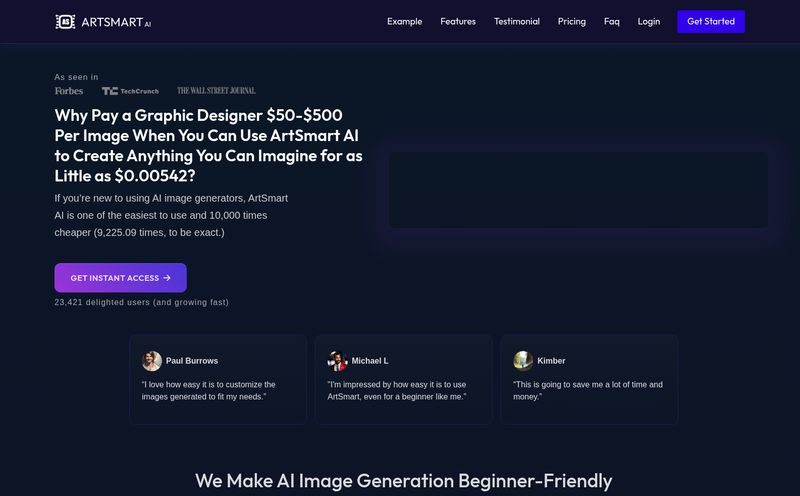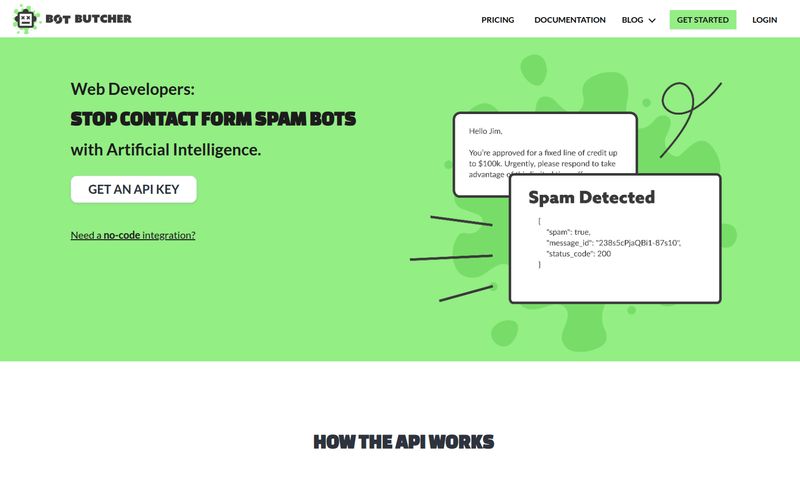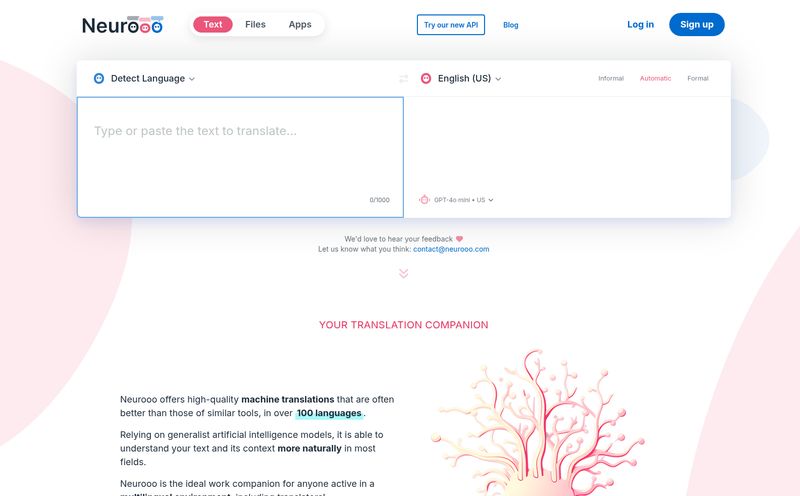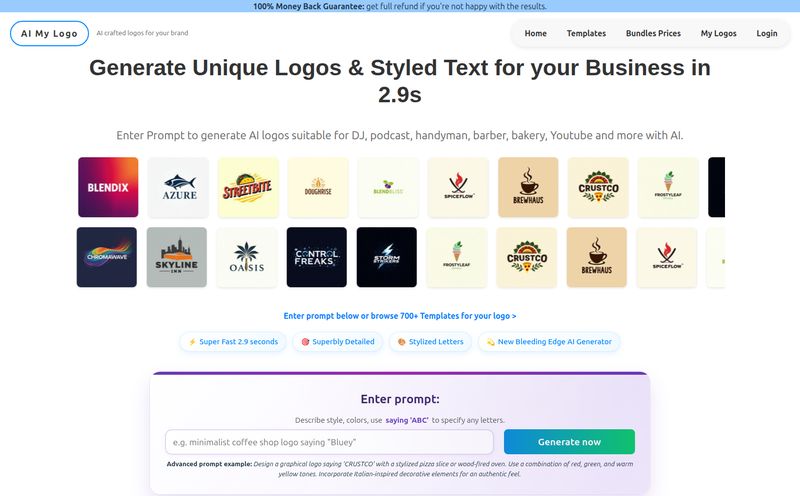Just you and me. For years, I’ve been cramming QR codes onto client assets. Beautifully designed brochures, sleek product packaging, minimalist event posters... and then, BAM. There it is. A clunky, black-and-white digital smudge that looks like it crash-landed from 1994. It’s the digital equivalent of putting ketchup on a filet mignon. It just feels… wrong.
We all know the story. QR codes were kind of a nerdy gimmick for a while, then the pandemic hit and suddenly they were indispensable. We used them for menus, for checking in, for everything. They became part of our daily lives. But while the rest of digital design moved on, the good old QR code mostly stayed the same. A functional, but deeply uninspired, box of pixels.
I’ve always felt it was a massive missed opportunity for branding. So when I stumbled across a platform called UNIQR, my curiosity was definitely piqued. Their whole pitch? Turning any image into a beautiful, scannable, and on-brand QR code. Color me intrigued.
So, What's the Big Deal with UNIQR?
UNIQR isn’t just another QR code generator that lets you change the color from black to navy blue. No, this is a whole different beast. The platform's core idea is to let you embed a QR code’s data pattern directly into an existing image. Think of your company logo, a picture of your signature dish, or even a selfie, transformed into a scannable gateway.
They call them “PIQ Codes,” for Picture QR Codes, and honestly, the name fits. It's about making the code itself a piece of the visual content, not an ugly necessity you have to shove in the corner. Instead of breaking your design, it becomes part of it. It’s a simple concept, but the implications for marketers and designers are pretty huge.
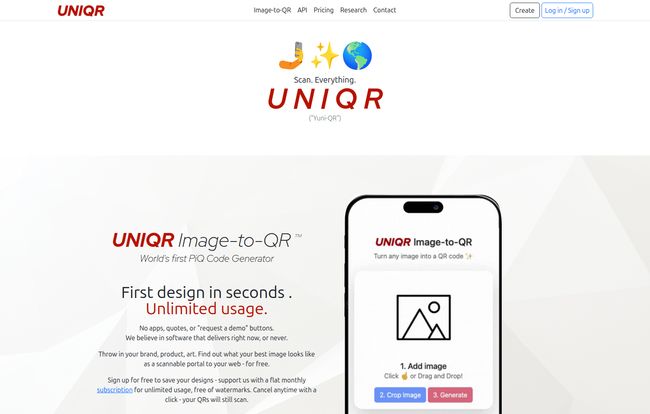
Visit UNIQR
The goal, as they put it, is to “make it worth a scan.” And I get that. When a QR code looks interesting, when it's integrated into a cool photo or graphic, you’re naturally more curious to see where it leads. It's a tiny psychological nudge that can make a real difference in engagement.
Getting Your Hands Dirty: The UNIQR Experience
I’m always skeptical of tools that promise design magic in seconds, so I had to see how it worked. The interface is refreshingly straightforward. You upload your image—a logo, a photo, whatever—and the tool overlays the QR pattern. From there, you can start tweaking.
You have control over colors and styles, allowing you to match the code to your brand palette. The whole process feels less like technical configuration and more like a creative exercise. In my experience, the best tools are the ones that get out of your way and let you create, and UNIQR does a pretty good job of that. You're not drowning in a million settings; you're just making your image scannable.
The Critical Difference: Static vs. Dynamic Codes
Now, here’s where we get into the nitty-gritty that separates the casual user from the serious marketer. UNIQR offers both static and dynamic QR codes.
- A Static QR Code has its destination URL baked right in. It’s permanent. If you link it to your homepage and later decide you want it to point to a new landing page, you're out of luck. You’d have to create a whole new code. They're fine for things that never change, like a vCard or a plain text message.
- A Dynamic QR Code is the secret sauce. The code itself points to a short redirect URL controlled by UNIQR. This means you can change the final destination link whenever you want, even after the code has been printed on 10,000 flyers. Not only that, but this setup allows for scan tracking. You can see how many people are scanning your code, from where, and when. For any marketing campaign, this data is gold.
Frankly, if you're using QR codes for business, you need dynamic codes. Period. It's the only way to measure ROI and maintain flexibility.
The Price of Beauty: UNIQR's Pricing Plans
Of course, this kind of functionality comes at a price. Let's break down their subscription tiers. I’ve put it in a simple table because, let’s be real, nobody enjoys deciphering pricing pages.
| Plan Name | Price | Key Features | Who It's For |
|---|---|---|---|
| UNIQR Three | $9.99 /month | 3 Dynamic QR Codes, Scan Tracking | Small businesses or freelancers juggling a few campaigns. |
| UNIQR Five | $14.99 /month | 5 Dynamic QR Codes, Scan Tracking | Growing businesses or marketers needing a bit more flexibility. |
| UNIQR PRO | $99 /month | Unlimited Dynamic & Static QR codes | Agencies, large brands, and power users who need it all. |
| UNIQR API | Custom Pricing | Programmatic QR code generation | Developers and platforms wanting to integrate the tech. |
The PRO plan is where you get the unlimited codes and, from what I gather, features like watermark-free designs. This is pretty standard for SaaS models—the lower tiers give you a taste, but the real power is in the top-tier subscription. For an agency managing multiple clients, that $99/month could easily pay for itself in improved campaign aesthetics and trackability.
The Good, The Bad, and The Scannable
No tool is perfect. After playing around and thinking about its real-world application, here’s my honest take.
The upside is obvious. You get unique, visually appealing QR codes that can genuinely enhance a design rather than detract from it. It's fantastic for brand consistency. The interface is easy, and the availability of dynamic codes with tracking is a professional must-have.
On the other hand, the most powerful features are, unsurprisingly, locked behind the PRO subscription. And there's a practical consideration: scannability. If you choose a super busy, low-contrast image, you might create a beautiful code that phones struggle to read. This isn't really a flaw of the tool itself, but a user responsibility. You can't just slap the pattern over a chaotic mess of pixels and expect flawless performance. A little design common sense goes a long way. I've also heard whispers that some free or basic QR generators show a quick ad before redirecting; while I didn't see it explicitly on UNIQR's site, it's something to be aware of in the QR world generally.
Creative Ways to Use Image QR Codes
Let's move beyond just linking to a homepage. Where could you really use this?
- On Business Cards: Use your professional headshot as the image, linking to your LinkedIn profile. It's memorable and incredibly slick.
- On Restaurant Tables: A picture of your most Instagrammable cocktail becomes the QR code for the full drinks menu.
- In Real Estate: A picture of the house on the "For Sale" sign could link to a full virtual tour.
- On Product Packaging: An image of the finished product could link to a video tutorial or user guide.
- For Musicians: A band photo on a concert poster could link directly to Spotify or a ticket purchasing page.
The possibilities are pretty much endless. It’s about creating a more cohesive and interactive experience for the user.
My Final Verdict: Is UNIQR a Gimmick or a Game-Changer?
So, what’s the bottom line? I went in skeptical and came out pleasantly surprised. UNIQR is not a gimmick. It’s a specialized tool for a specific, and growing, marketing need: making every brand touchpoint beautiful and effective. Those old black-and-white squares feel like digital broccoli—we know we need them, but nobody's excited about it. UNIQR turns them into something you're actually proud to put on your design.
Is it for everyone? If you just need one static QR code for your Wi-Fi password, probably not. But for marketers, agencies, and brand-conscious business owners who understand that details matter, UNIQR is a powerful addition to the toolkit. It's a clever solution to a problem many of us have just learned to live with. And I, for one, am happy to see someone finally making QR codes worth a second look.
Your UNIQR Questions, Answered
What image formats does UNIQR support?
According to their site, you can use common formats like JPG, PNG, and even GIFs. This gives you a lot of flexibility for your designs.
Will my UNIQR code expire?
No, one of the features they highlight is that the codes never expire. With a dynamic code, even if your subscription lapses, the code should still function, though you'd lose the ability to edit the destination or track analytics.
Is it hard to make a code that actually scans well?
It requires a bit of thought. My advice: use an image with good contrast and a clear focal point. Avoid overly 'busy' or cluttered images where the QR pattern can get lost. The platform is designed to make them scannable, but a smart image choice is key.
Can I track how many people scan my code?
Yes, absolutely! This is one of the main benefits of using their dynamic QR codes, which are available on all their paid plans. You get access to analytics to track scan performance.
Is the UNIQR PRO plan worth the money?
In my opinion, if you're an agency or a brand that uses QR codes across multiple campaigns, then yes. The ability to create unlimited dynamic and static codes without watermarks is essential for professional, high-volume work. For a small business, one of the smaller plans is likely a better starting point.
Reference and Sources
- UNIQR Official Website
- UNIQR Pricing Page
- The Surprising Staying Power of QR Codes (Search Engine Journal)
